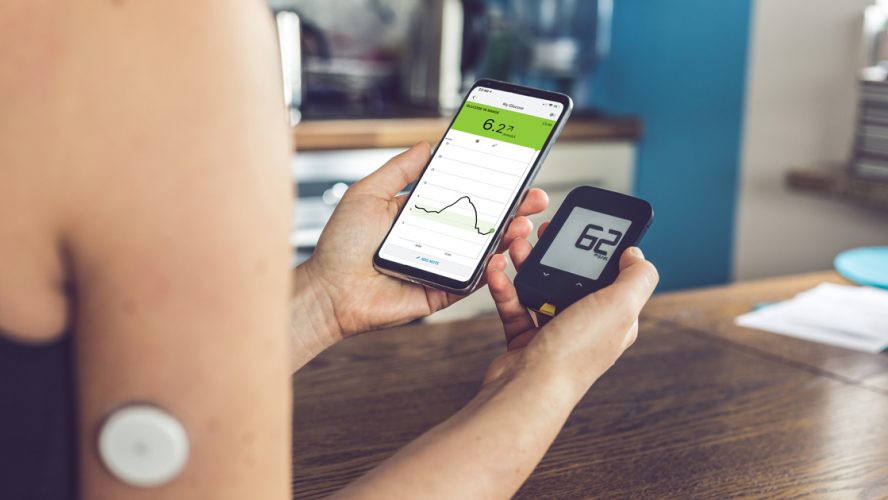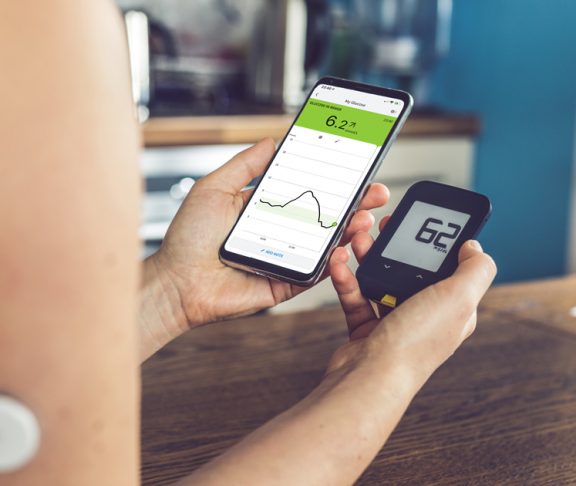
Professor Pratik Choudhary
Professor of Diabetes, Diabetes Research Centre, University of Leicester, and Chair, Diabetes Technology Network UK
New smart and connected technology is helping people with diabetes live better. It means they don’t have to constantly think about their condition and monitor themselves.
Previously, whenever Professor Pratik Choudhary altered someone’s diabetes treatment, he would arrange a face-to-face follow-up appointment to assess the impact it was having. Now, however, advances in connected tech and remote monitoring mean that he may not even need to follow-up with a video consultation. “That’s because some glucose meters or sensors can send data to the cloud, that I can read in my office. The way we interact with those in our care has changed — which COVID-19 has accelerated dramatically,” he says.
Benefits of closed-loop systems
Professor Choudhary believes we’re approaching a technological tipping point in diabetes care. “The burden we place on people with diabetes has been growing incrementally,” he says.
This is partly down to how technology has advanced over the years. Take glucose monitors. These have done away with the need for finger prick tests, but they’re also constantly reminding people for the need to manage their condition. “Monitors might beep 10 times a day to tell you that your glucose is too high or too low,” he says. “That’s good to know — but then you actually have to do something about it.”
The way we interact with those in our care has changed — which COVID-19 has accelerated dramatically.
However, closed-loop systems take this pressure away. Data from continuous glucose monitoring (or CGM) is sent to a person’s insulin pump which automatically adjusts the insulin it needs to deliver.
Access to this technology is limited admits Professor Choudhary, but it’s a game-changer. “Closed-loop systems allow people to go about their lives without having to constantly monitor themselves or think about their diabetes because the machine does it all for them. It’s the future of diabetes care.”
The future of diabetes care technology
The next few years promise to be an exciting time in diabetes tech. At present, 40% of those with type 1 diabetes are using flash monitoring systems (a sensor that sits on the skin, and a reader that scans the sensor to read sugar levels).
“Evidence shows that flash monitors significantly improve glucose control and quality of life, and reduce hospitalisation,” says Professor Choudhary. “It would also be good to roll them out to those with type 2 diabetes who need them.”
“We used to tell people living with diabetes: “If you work hard to manage your condition, you’ll get better results,’” says Professor Choudhary. “Now that’s changing to: ‘Thanks to new tech we can take some of that work away from you — and you’ll get better results.’”

